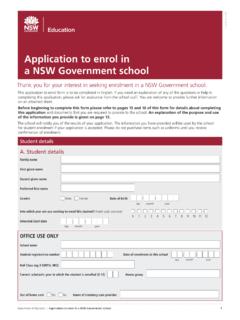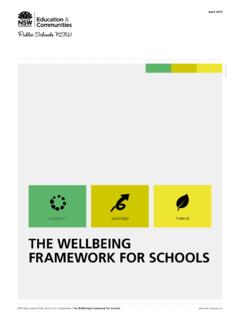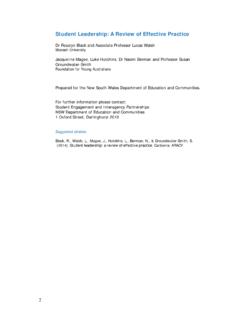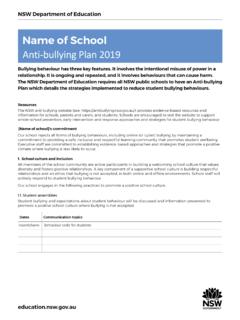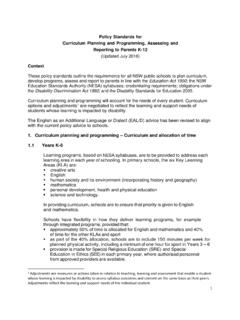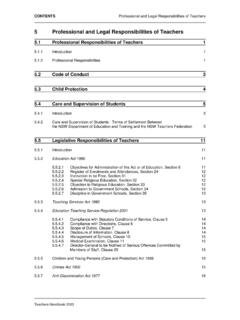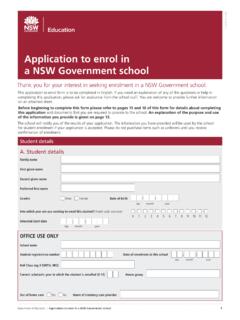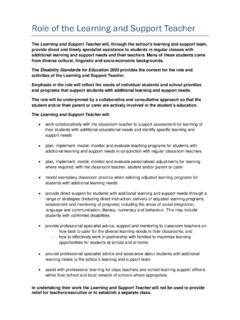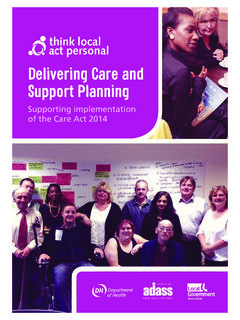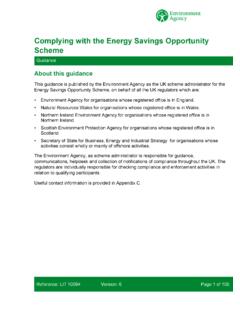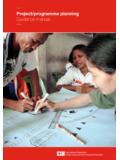Transcription of EDUCATOR’S GUIDE TO THE TRANSITION TO SCHOOL …
1 EDUCATOR'S GUIDE TO THE. TRANSITION TO SCHOOL STATEMENT. This GUIDE is a resource for educators and teachers who use the TRANSITION to SCHOOL Statement. It can GUIDE the responses of early childhood educators, and assist kindergarten teachers to interpret these responses. A key goal of the TRANSITION to SCHOOL Why use the TRANSITION to SCHOOL Statement is to Statement? support continuity of The TRANSITION to SCHOOL Statement gives a snapshot of the learning, development, learning and teaching and background of children moving from an early childhood service to strategies for children kindergarten. It complements other TRANSITION activities, such as information and orientation sessions, SCHOOL preparation and family engagement.
2 Moving from early childhood education The more early childhood educators use the TRANSITION to SCHOOL Statement, the to kindergarten. more useful it will be for kindergarten teachers to build a strong educational foundation for the children they teach. The Statement is focused on: 1. Using a child-centred approach 2. Providing continuity of learning between ECE services and schools A strong start in early 3. Ensuring equity in SCHOOL transitions. education has sustained positive benefits to TRANSITION to SCHOOL in context children, families, Starting SCHOOL is a big milestone for children and their families. This TRANSITION schools, and the broader between learning environments can be both challenging and exciting, and there community.
3 Are many different programs and activities that schools, services, and families are involved with that are designed to support the TRANSITION process. Over the page is a timeline of activities that commonly take place in the year before SCHOOL for services that provide preschool programs. L. H OO. SC. TO. O N. TI. SI. AN. TR. The term early childhood professionals in this document includes, but is not limited to, all early childhood practitioners who work directly with children in early childhood education and care settings, for example: SCHOOL teachers, maternal and child health nurses, family support workers, preschool field officers, inclusion support facilitators, student support service officers, primary SCHOOL nurses, primary welfare officers, early childhood intervention workers, play therapists, health professionals and teachers working in hospitals, and education officers in cultural organisations.
4 1 of 10. EDUCATOR'S GUIDE TO THE TRANSITION TO SCHOOL STATEMENT. In NSW, children move from educational programs shaped by the In the TRANSITION to SCHOOL period, early childhood educators and Early Years Learning Framework (EYLF) in preschool programs, kindergarten teachers need to be able to understand where a to the Early Stage 1 Curriculum in kindergarten. The TRANSITION child is coming from (EYLF) and where they are likely to enter to SCHOOL Statement, completed by early childhood teachers, is the Early Stage 1 Curriculum (ES1). This is what the TRANSITION to designed to bridge the gap between the two learning models. SCHOOL Statement is intended to support.
5 The intention of the Statement is that it has immediate practical value to kindergarten teachers, capturing the experience and expertise of the early childhood educators in a way that they can use to provide continuity of learning for each child. 2 of 10. EDUCATOR'S GUIDE TO THE TRANSITION TO SCHOOL STATEMENT. EYLF outcomes and their links to the Early Stage 1 Syllabus The TRANSITION to SCHOOL Statement prompts early childhood The Statement links to different curriculum indicators in the Early educators to provide information on learning and development Stage 1 Syllabus. This GUIDE shows the links between the EYLF. indicators and advice on the intentional teaching strategies for and the ES1 syllabus, so by using this approach the Statement can each child they have used.
6 Effectively be read as a learning and development handover' from These outcomes are based on the Early Years Learning Framework the early learning service to the SCHOOL . (EYLF). Completing and interpreting the Learning support information Statement immediately highlighted for the kindergarten teacher Completed by the early OL. HO. childhood educator or teacher ON. TO. SC. TI. SI. 1. My early education details AN. TR. Name of early educator completing this Statement Preschool/Service name Preschool/service address Phone contact Email contact Date form completed Child's period of enrolment at service day/month/year day/month/year Enrolled days per fortnight Does this child receive additional support, here or at another Comments service, relating to their learning or development?
7 Yes No This could include speech therapy, physiotherapy, occupational therapy, or other support. Please attach additional reports or information if available. 2. How I feel about SCHOOL Child and early childhood educator complete this section together Educator's prompts Child's responses Have you visited your new SCHOOL ? Who did you go with? Include information regarding Is there anything you'd like to know about your new additional learning support SCHOOL ? plans Would you like me to tell your new SCHOOL teacher anything about you? 3 of 7. 3 of 10. OL. HO. SC. TO. N. T IO. SI. 1. My early education details AN. TR. Name of early educator completing this Statement Preschool/Service name Preschool/service address EDUCATOR'S GUIDE TO THE TRANSITION TO SCHOOL STATEMENT.
8 Phone contact Email contact Date form completed Child's period of enrolment at service day/month/year day/month/year Enrolled days per fortnight Does this child receive additional support, here or at another Comments service, relating to their learning or development? 2. How I feel about SCHOOL Yes No This could include speech therapy, physiotherapy, occupational therapy, or other support. Please attach additional reports or information if available. 2. How I feel about SCHOOL Child and early childhood educator complete this section together Educator's prompts Child's responses Designed to engage the child in actively Have you visited your new SCHOOL ?
9 Who did you go considering their TRANSITION to their new with? Is there anything you'd like SCHOOL to know about your new SCHOOL ? Would you like me to tell your new SCHOOL teacher anything about you? OL. HO. SC. TO. N. IO. 3. My early learning and development SI. T. AN. TR. Early childhood teacher or educator completes this section. 3 of 7. Outcome 1: Sense of identity Always Usually Sometimes Needs support Participates in learning and play Shares and negotiates with others 3. My learning and development outcomes Responds when distressed or upset LINKS TO ES1 PDHPE Science English Creative Arts Mathematics HSIE. The five EYLF outcomes are divided into demonstrative Intentional teaching strategies used or recommendations related to this outcome: behaviours, which together present a snapshot of the child's preferences, learning styles, and abilities.
10 ECE educator marks child's indicators Outcome 2: Connection with and contribution to the world Always Usually Sometimes Needs support Participates in large and small groups Shows awareness of the needs of others Snapshot of child's Shares knowledge and experience in play and learning Builds and maintains relationships with others behavioural indicators LINKS TO ES1 PDHPE Science English Intentional teaching strategies used or recommendations related to this outcome: Which part of the ES1. these indicators link to ECE educator notes information which 4 of 7. could help create a learning plan. This may include intentional teaching strategies, suggestions, or tips that may be useful for the kindergarten teacher The Early Years Learning Framework provides early educators with support, or other strategies that enhance a child's learning tips, suggestions, and strategies to support children in achieving environment and wellbeing.
